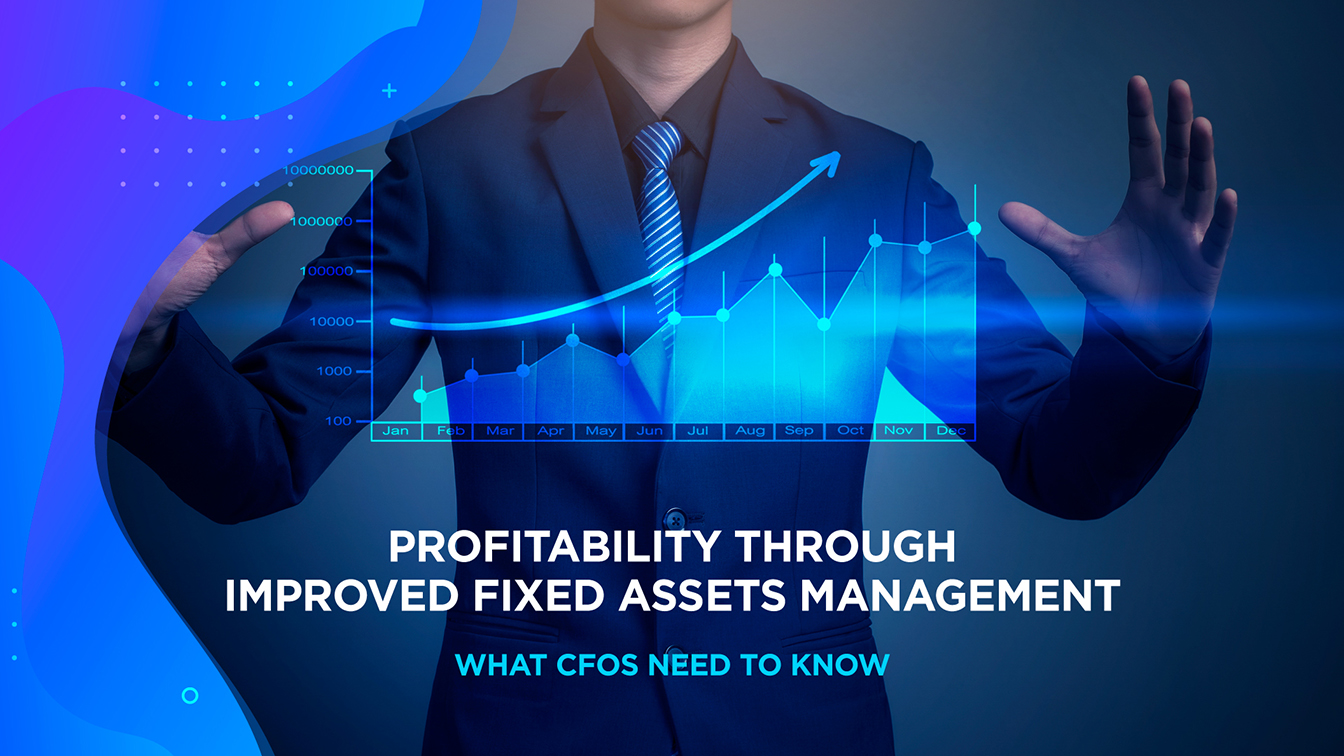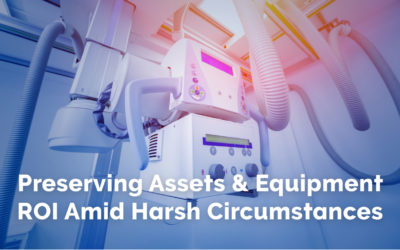All organizations are, to a certain degree, sustained by the effective management of fixed assets. A necessary lifeline, fixed assets are used every day to enhance a firm’s production capacity and ensure long-term profitability.
Since fixed assets constitute nearly 40 percent of all total asset costs, visibility and insight into asset utilization have a direct impact on profitability. As such, the use of fixed asset management software is required to enable an organization to maximize the value of their assets through the asset’s complete lifecycle.
Whether it’s manufacturing facilities, office equipment, or computer software, each fixed asset comes with its own set of challenges. If these assets are misused, inaccurately accounted for, or worse yet, stolen, the company in question may experience costly issues that will ultimately eat into profits.
It’s imperative for organizations to have effective oversight into the right mix of assets. Knowing how assets are being chosen, managed, and in time, disposed of, ensures all fixed assets are appropriately accounted for.
This results in assets positively contributing to operational efficiency, productivity, and customer satisfaction, bolstering ROI.
The need for asset management solutions
The value of asset management and maintenance software may seem fairly obvious.
Asset performance management is essential to enable useful and timely decisions by C-suite executives, as well as to stay ahead of increased local and global competition.
With asset management software, CFOs are able to:
Reduce operating costs
You can add up to as much as 30 percent to your profits by implementing good asset management practices.
Fixed assets are necessary for profit generation. However, if they’re not running optimally, they can drain your budget rapidly.
Poor asset management can eat away at your profits in terms of downtime, out-of-stock issues and costly repairs. Conversely, regular scheduled asset maintenance can significantly extend the lifespan of assets by up to three times longer. Taken together, these can positively affect financial results by improving production capacity and or profits.
Improve forecasting of CapEx and OpEx
Sound asset management practices give companies a good understanding of their assets, their condition, performance, maintenance costs and their lifespan. This information makes it easy to determine the operational expenditure necessary to keep assets properly maintained and fully functional.
The same information is required to forecast when capital expenditure is needed for the replacement of an asset that has reached the end of its lifespan or when there is new, better technology available. Asset management data is also essential in identifying which assets are business-critical and why. In fact, the better your knowledge and understanding of your company’s assets, the more reliable and accurate financial reporting, as well as depreciation and residual value figures will be.
Add financial value with innovative, intelligent technology
The fourth industrial revolution is expected to take asset management to a whole new level, bringing with it greater automation and a reduction of human interference and error.
Capitalizing on the efficiency and effectiveness provided by new technology helps companies to remain competitive and profitable. Of course, acquiring new technology comes with some upfront capital investments. However, by planning for acquisitions, phasing out and replacing older assets with sensor-driven intelligent equipment will add value to your operation.
Protect people and the environment
Profiting from sound asset management practices is not just financial but also social and environmental.
Today, people expect companies to be socially and environmentally responsible as they continue to operate and generate profit.
Effective asset management means you’ll not only be protecting, maximizing and extending the lifespan of your machinery and other fixed assets.
You will also be protecting the lives of the people in your employ and the community in which you operate through the reduction of workplace risks and injury and reducing your carbon footprint in the process.
Choosing an enterprise asset management system
In today’s technology-enabled era, CFOs must align data analytics with asset management efforts to address significant economic, regulatory and client-related challenges. Investing in new digital capabilities can allow organizations to improve asset use and better manage and secure their investments.
When choosing the right asset management solution and platform, advanced analytics is a critical core competency. As a financial decision-maker, delivering outcomes for customers requires predicting the future direction and management of the organization. This requires optimally managed assets.
An integrated asset management platform allows a CFO to consolidate and aggregate information, delivering on data-driven insights which drive broader business transformation and financial management.
Mobility, ease of use, and a wide variety of functionalities are also factors to consider when evaluating an asset management provider or solution.
A web- or cloud-based management tool will ease the way workers interact with the asset management platform. This is especially useful if your company manages multiple locations or contractors are required to report work activities remotely.
A mobile asset management solution eliminates delays experienced with standard reporting mechanisms. Access to real-time data ensures your business can capture the right information at the right time, improving its ability to respond to unexpected changes.
Usability is also a core capability required by many organizations.
New systems must be understood intuitively with minimal orientation to maximize ROI and lower total cost of ownership. If users find the software abstruse, adoption can be hindered, which can result in fragmented data or data integrity risks.
End-to-end asset management with Aladdin
As a cloud-based platform powered by Microsoft Azure, SGE’s Aladdin asset lifecycle management software empowers CFOs with a 360-degree approach to fixed asset management.
With industry-leading services like gap analysis and benchmarking and asset condition assessment, organizations across all industries are able to manage asset utilization better, making the most out of their investment.
Aladdin’s enterprise asset management platform is easily accessible and provides real-time analytics, fueling intelligent reporting that facilitates actionable insights and informed business decisions.
By automating asset processes with Aladdin, organizations can eliminate traditional asset management bottlenecks, securing tangible cost savings immediately.
Experience a new approach to asset management
With more and more organizations realizing that the key in achieving optimal operational productivity and profitability lies in technology, finding the right asset management provider or solution is no longer a nice-to-have, it becomes a necessity.
As an industry-leading asset management solution, Aladdin is well-equipped to help CFOs and their organizations navigate complex data analytics and support operational strategy development that drives profit improvement.
To learn more about how SGE’s Aladdin can digitize your asset management experience, and empower your business to improve its financial productivity and predictive analysis, contact one of our industry sector specialists today.




0 Comments